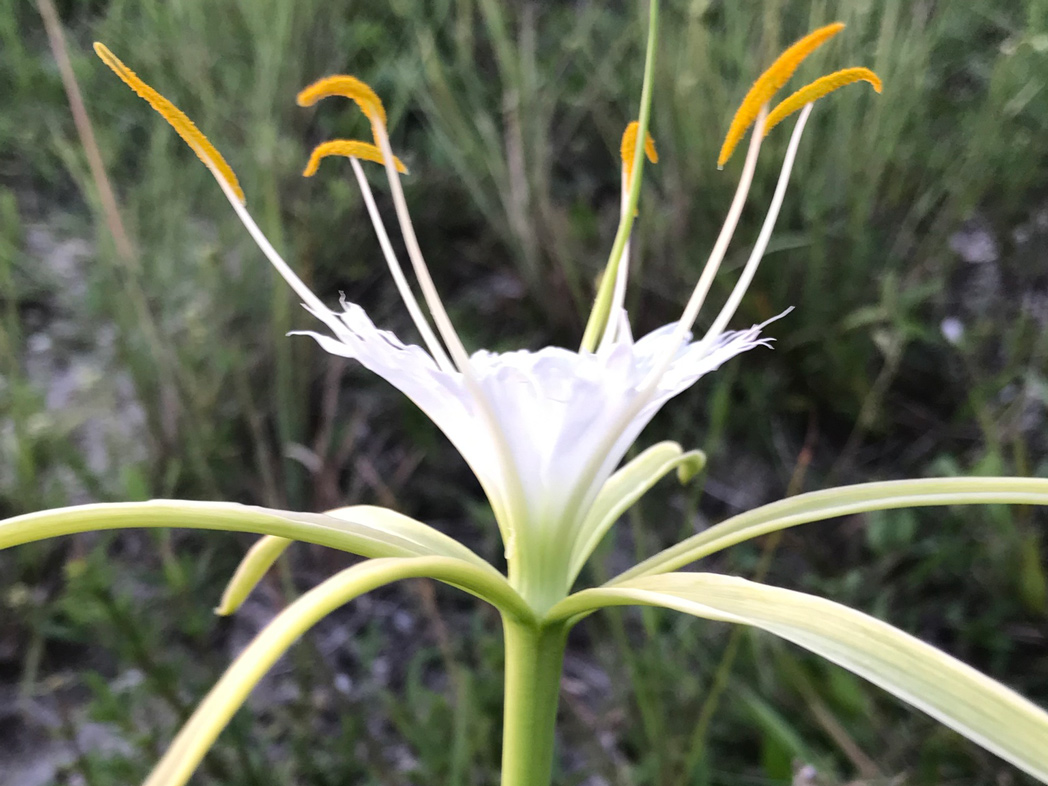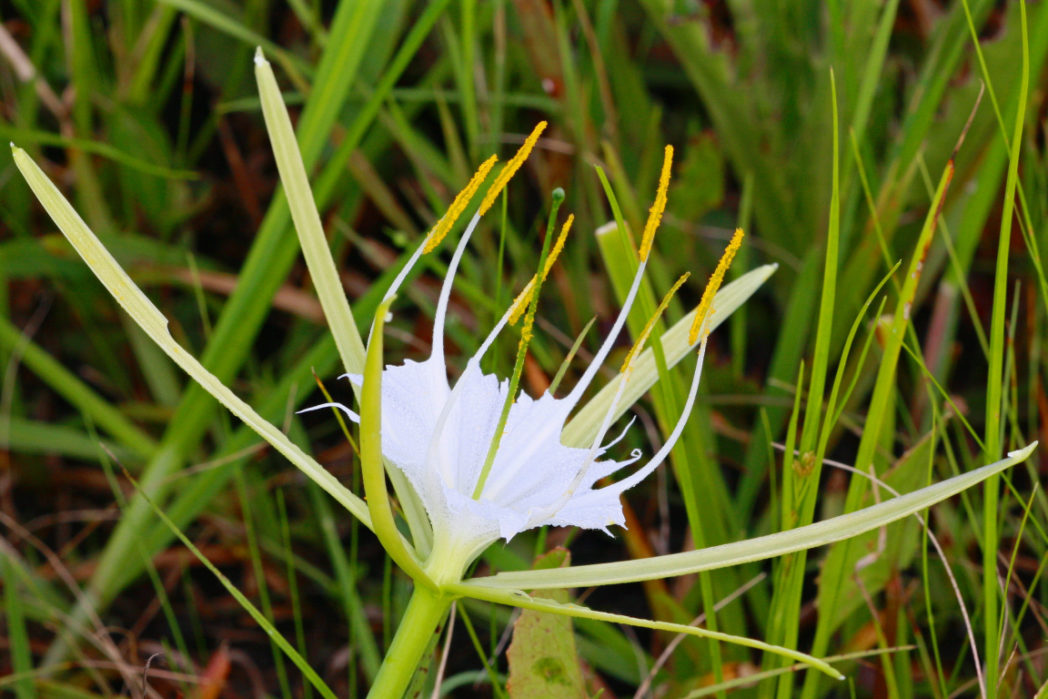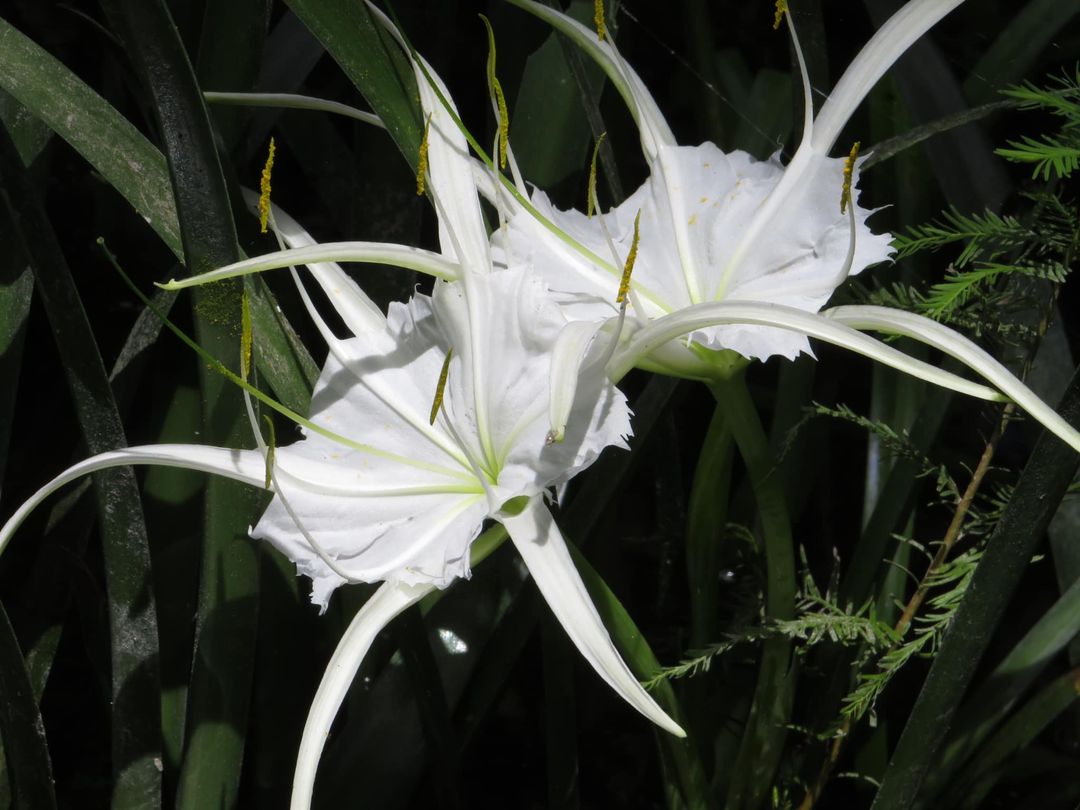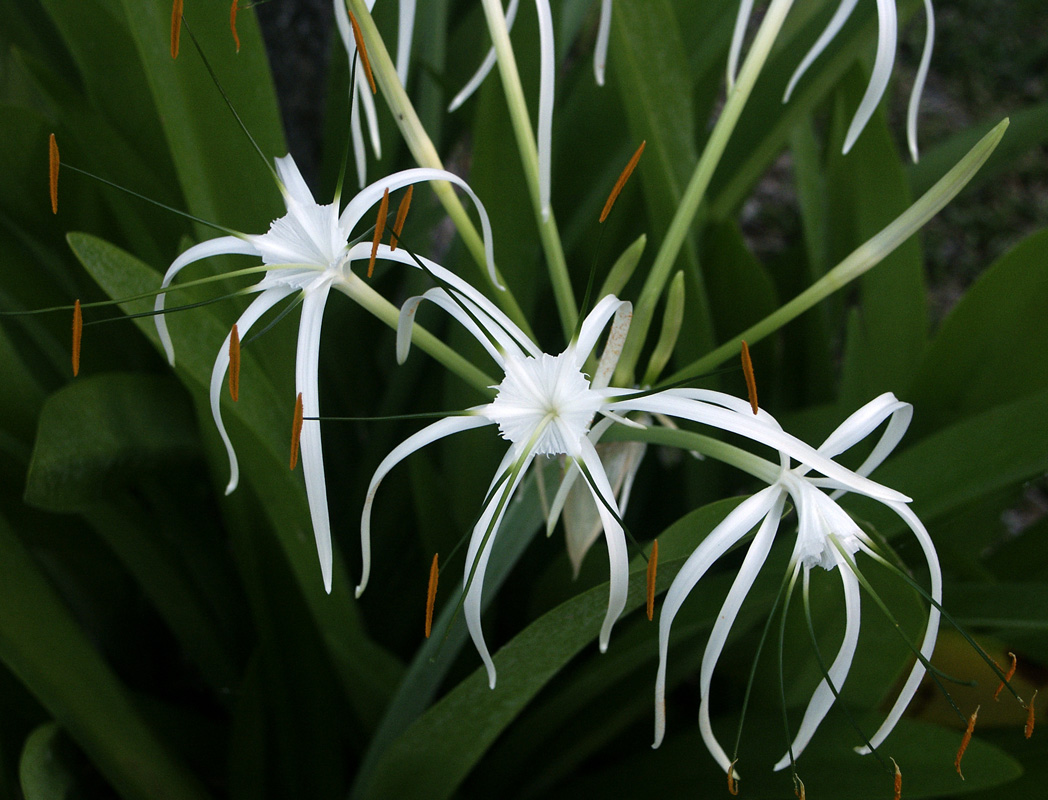Alligatorlily
Pictured above: Alligator lily (Hymenocallis palmeri) by Brian Garrett (CC BY-NC). Click on terms for botanical definitions. View post as a PDF.
Alligatorlily is a perennial wildflower endemic to cypress swamps, marshes, wet prairies, savannas and moist open flatwoods in Florida’s central and southern peninsula. It also occurs in Duval and Bradford counties and is sometimes found in roadside ditches. Its striking white flowers are primarily pollinated by Sphinx moths.
Alligatorlily’s fragrant flowers are solitary and terminal. They have three linear petals and three petal-like sepals, all of which radiate from beneath a thin, white, funnel-shaped corona. The corona is marked by faintly toothed margins and a greenish “eye” in its center. Leaves are basal, linear or straplike and can grow up to 16 inches in length. Stamens are long and prominent with large noticeable anthers. Seeds are green, egg-shaped and relatively large (up to ¾-inch in diameter).
The genus Hymenocallis is from the Greek ὑμήν (hymen), meaning “membrane,” and καλός (kalos), meaning “beautiful,” and refers to the corona. The species epithet palmeri honors British botanist Edward Palmer.
Family: Amaryllidaceae (Amaryllis family)
Native range: Central and southern peninsula, Bradford and Duval counties
To see where natural populations of Alligatorlily have been vouchered, visit florida.plantatlas.usf.edu.
Lifespan: Perennial
Soil: Moist to saturated sandy or mucky soils
Exposure: Full sun to partial shade
Growth habit: 2’+ tall
Propagation: Seed
Florida regions of landscape suitability: Central, South
Garden tips: Alligatorlily works well in naturalistic settings with moist to wet conditions, such as a pond edge restoration. It is neither salt nor drought tolerant.
Alligatorlily plants are occasionally available from nurseries that specialize in Florida native plants. Visit www.plantrealflorida.org to find a nursery in your area.
Learn more about Mangrove spiderlily from the Institute for Regional Conservation.
For information on other Hymenocallis species, see these resources:




